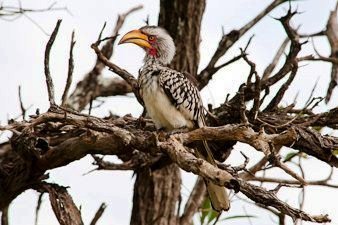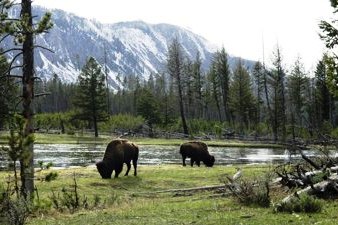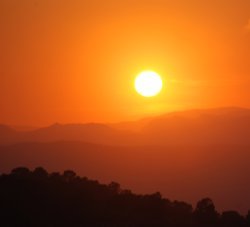
A fundamental step-change involving an increase in funding and political commitment is urgently needed to ensure that protected areas deliver their full conservation, social and economic potential, according to an article published on November 5 in Nature by experts from the Wildlife Conservation Society, the University of Queensland, and the IUCN World Commission on Protected Areas (WCPA).
The paper, “The Performance and Potential of Protected Areas”, came ahead of the IUCN World Parks Congress 2014 – a once-in-a-decade global forum on protected areas that opened today in Sydney, Australia.
According to the authors, allocating US $45-$76 billion to protected areas annually – just 2.5% of the global annual military expenditure – could help adequately manage those areas, ensuring their potential contribution to the wellbeing of the planet is fully met.
Many threatened species, such as the Asian elephant, the tiger, and all rhinoceros species, as well as numerous plants, reptiles and amphibians, survive thanks to protected areas. Well-managed marine protected areas contain more than five times the total large fish biomass and 14 times the shark biomass compared with fished areas.
“Protected areas offer us solutions to some of today’s most pressing challenges,” says Dr. James Watson of the Wildlife Conservation Society and The University of Queensland and lead author of the study. “But by continuing with ‘business as usual’, we are setting them up for failure. A step-change in the way we value, fund, govern and manage those areas is neither impossible nor unrealistic and would only represent a fraction of what the world spends annually on defence.”
According to the latest data, protected areas cover around 15% of land and 3% of oceans. Experts warn, however, that despite the significant increase in their coverage over the past century, this is still short of the global 2020 targets to protect at least 17% of land and 10% of oceans. Many ecosystems remain poorly conserved because protected areas do not always encompass the most important areas for biodiversity.

In addition, the vast majority of existing protected areas that are well placed do not have sufficient resources to be effective, with some studies finding as few as one quarter of them are being effectively managed. Growing threats from climate change and the escalating poaching crisis place additional pressures on protected areas globally.
“Some of the most iconic protected areas, such as Ecuador’s Galapagos National Park, are undergoing significant degradation, partly due to an inability to manage them effectively,” says Professor Marc Hockings of the University of Queensland, co-author of the study and member of the IUCN WCPA. “But governments cannot be solely responsible for ensuring that protected areas fulfill their potential. We need to find new, innovative ways to fund and manage them, actively involving government, business and community groups.”
The paper also highlights an alarming increase in governments – in both developing and developed countries – backtracking on their commitments through funding cuts and changes in policy. A recent global analysis has documented 543 instances where protected areas saw their status downgraded or removed altogether.
For example, recent cuts to the Parks Canada budget have reduced conservation spending by 15%. In Uganda, active oil exploration and development is occurring inside many protected areas, including Murchison Falls National Park. In Indonesia, in 2010, mining permits were issued inside 481,000 hectares of protected areas and in the Virgin Komi Forests in Russia, significant boundary changes have been made to reserves such as the Yugyd Va National Park to allow mining. The Arabian Oryx Sanctuary in Oman was removed from the World Heritage List after the government reduced the size of the reserve by 90% to allow for oil and gas extraction.
“There is a fundamental need for an increase in support of global protected areas, including better recognition, funding, planning and enforcement,” says Nigel Dudley, co-author of the paper, from Equilibrium Research and the University of Queensland, member of the IUCN WCPA. “It is governments’ responsibility to step up but there is also the need for the wider community to take collective responsibility for protected areas.”
Protected areas conserve biodiversity and sustain a large proportion of the world’s poorest people by providing them with food, water, shelter and medicine. They play a key part in climate change mitigation and adaptation and bolster national economies through tourism revenues. In Rwanda, for example, tourism revenue from visits to see mountain gorillas inside Volcanoes National Park is now the country’s largest source of foreign exchange, raising US $ 200 million annually. In Australia, the 2012–2013 budget for the Great Barrier Reef Marine Park Authority was approximately AUS $ 50 million, but tourism to the reef was worth more than AUS $ 5.2 billion annually to the Australian economy.


















